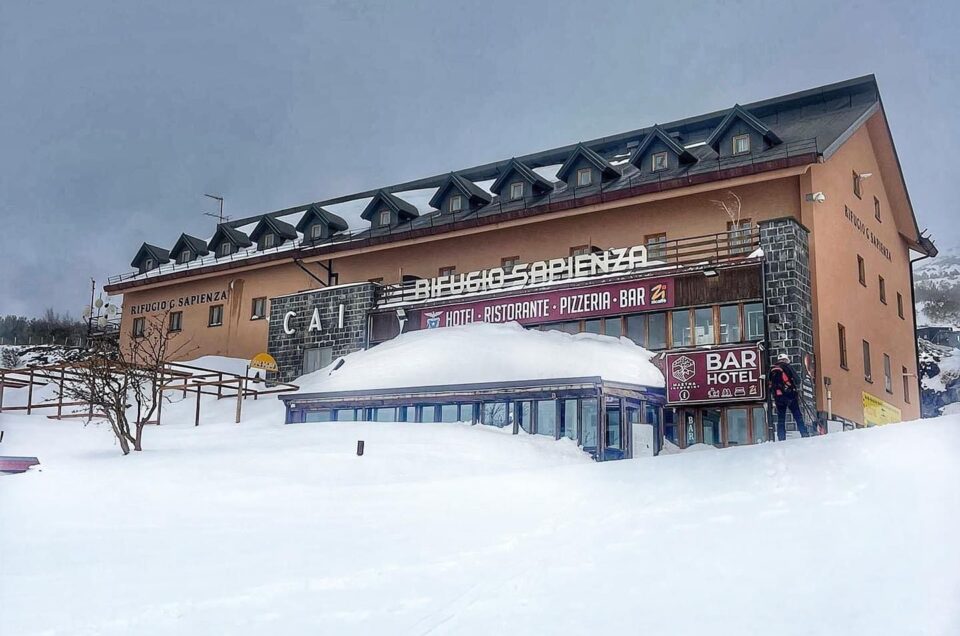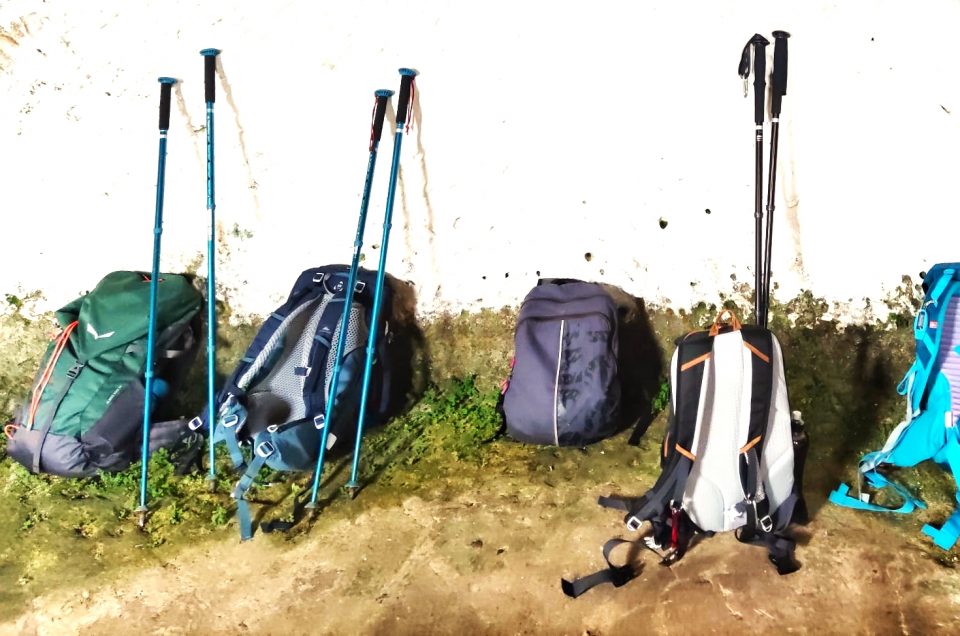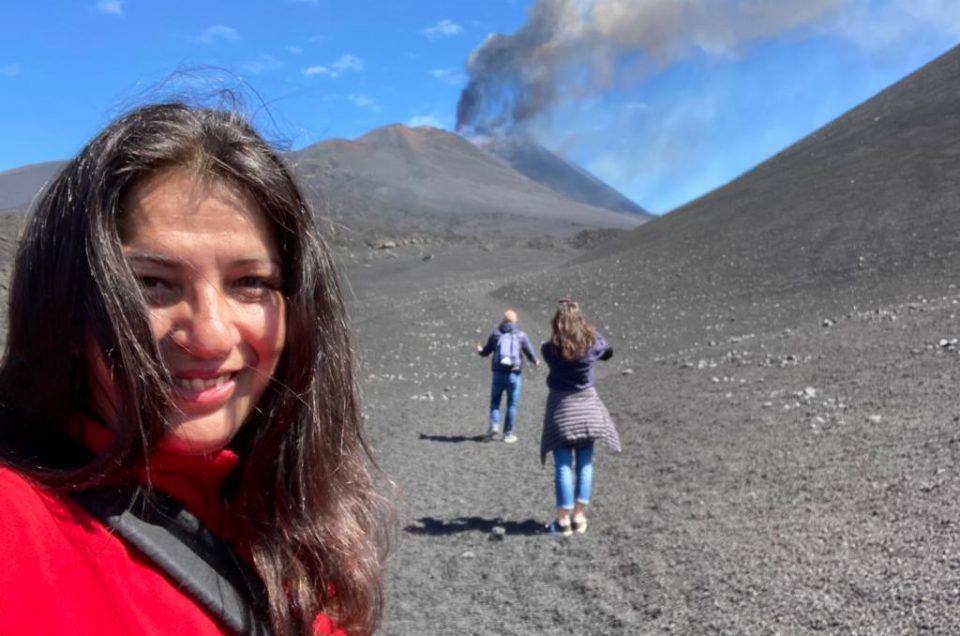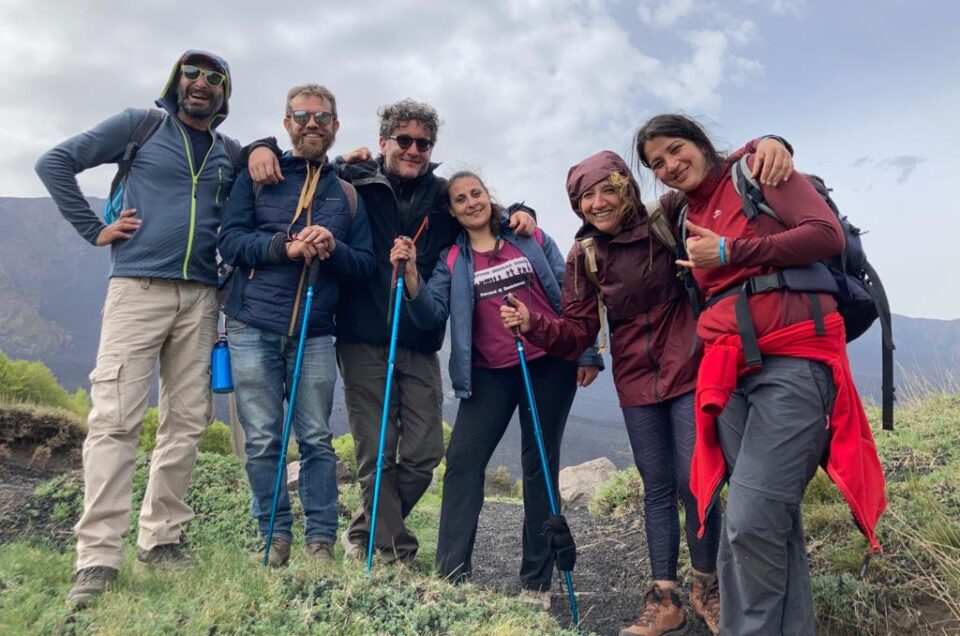In the past, it snowed more on Etna. But the substantial difference lies in the fact that until not long ago ‘a Muntagna was a destination for the few. The first road that connected Nicolosi to the Casa Cantoniera, on the south side, was only built in the 1930s. First, to conquer the volcano, we left Catania early in the morning on the back of a donkey along a mule track, up to the Benedictine monastery of Nicolosi (now the seat of the Etna Park) for a break. Only the most determined continued until they reached the Grotta delle Capre (years later at the Casa degli Inglese, in Torre del Filoso up 2500m about), to then leave at night towards the top, where, waiting for dawn, they wrote some of the most significant moments of the their lives.
Starting from the second half of the 1700s, in the context of the Grand Tour, many illustrious travelers arrived in Sicily from Europe attracted by the charm of art and the classical and scenic beauty and, once in Catania, many welcomed the call of the volcano. Some managed to get to the top, others, like Goethe, stopped earlier due to impossible weather conditions.
It was 1787 and Johann Wolfgang von Goethe arrived in Sicily to relive the myths of Homer. In his “Journey to Italy” he will leave testimonies and reflections of a Sicily that will profoundly mark the rest of his life.
In early May, Etna was still covered in snow and Goethe barely managed to reach the Monti Rossi di Nicolosi.
I like to imagine them as he must have experienced them: still barren, just over a century after the eruption that shaped them, perhaps very similar to those that today thousands of tourists trample, probably largely unaware, walking on the Silvestri craters at 2000 meters .
Then Goethe rode on the back of a mule and told of the slowness and intoxicating sweetness of the change of vegetation from the sea to the mountain, of the terror of the wind and the storm, of the majesty and respect that this living mountain aroused in him.
Around the middle of the 19th century, following the construction of roads and new hotels, one begins to perceive the change: the slow pace of the steps undergoes a new acceleration which marks the end of an era.
A pace that will be destined to increase dramatically with the construction of the first road, which reduces the time to reach an altitude of 2000 meters to one hour.
From an exotic and unknown land, Sicily becomes a popular destination.
However, every now and then, all this is still stopped by the grandeur of nature. And it’s not just the lava, as it would be easier to imagine. This time the lava attracted many onlookers; the mountain, on the other hand, decided to take a break.
Two meters of snow in two days blocked access to cars, isolated shelters, covered roofs and windows.
And here in a moment everything returns to what it was.
Break.
Some tourists have given up, others more fortunate have been accompanied to discover the same Monti Rossi which were Goethe’s destination in the 18th century. The intrepid, on the other hand, those who call Etna “mother” or “home”, put on snowshoes and skins under their skis and went to enjoy the silence, the magic of unusually soft landscapes and that intimacy that only Etna is able to give. Floor. In silence. At the slow pace of the steps. To enjoy those moments that we tend to forget because they are too caught up in the pressing rhythm of the present.
At least for a few days.









